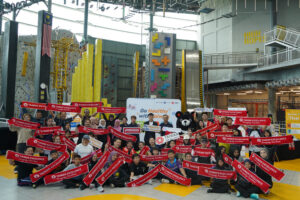The Future of Events is Hybrid: How Virtual Platforms are Reshaping Global Engagement

By Piyush Gupta, CEO of Vosmos
Events are becoming more structured around choice. Audiences expect to participate from wherever they are. Hybrid event experiences are addressing this shift by combining on-site presence with virtual access. The result is broader reach and stronger continuity without increasing operational complexity.
Organizers are relying on smart virtual event platforms to deliver these outcomes. These platforms do more than host sessions. They enable control, offer measurable event ROI, and bring flexibility across formats. Businesses are now designing events to meet audience behavior rather than forcing behavior to match the format.
Technology Built for Scale and Sustainability
Physical capacity no longer defines event reach. Scalable event technology now supports thousands of attendees across regions. This makes events more cost-efficient and more environmentally conscious.
According to Verified Market Reports, the Hybrid Event Platform Market stood at USD 3.19 billion in 2024 and is projected to reach USD 9.25 billion by 2033, growing at a CAGR of 12.6% from 2026 to 2033. This kind of growth reflects the demand for infrastructure that can support flexible, high-impact events at scale.
Features such as 3D event spaces and customizable event environments offer greater design freedom. Organizers are moving away from generic formats and building events that reflect specific goals. AI-powered event solutions help automate planning, personalize communication, and increase delivery speed.
Immersive virtual events are driving higher attention spans by focusing on interaction rather than passive viewing. They reduce friction and create consistency across touchpoints.
Engagement that Converts
Attendance alone does not drive value. Interaction does. Event gamification and leaderboards are encouraging participation. Attendees stay more involved when they feel part of the process. Engagement is no longer a byproduct. It is part of the planning stage.
Forrester reports that 64% of organizers are seeking technology partners to measure insights from virtual events. This shows how event tech is now central to engagement, not just logistics. The right tools allow interaction to be purposeful, not performative.
AI matchmaking for events is helping participants connect with the right people. It uses intent, job function, and topic interest to build relevant interactions. This leads to better follow-ups and stronger returns for sponsors.
Interactive event engagement tools such as live Q&A, polls, and breakout sessions allow participants to shape their experience. These tools make the event feel less like a broadcast and more like a collaboration. Personalized solutions based on behavior and preference keep engagement consistent across the agenda.
Clarity Through Analytics
Smart platforms offer real-time event analytics to help organizers measure performance during and after the event. Metrics include dwell time, session drop-offs, replay activity, and content interaction rates. These data points help teams improve the event while it is happening rather than waiting for a post-event review.
This visibility is useful across functions. Marketing teams can track lead quality. Sponsors can assess booth visits and engagement. Product teams can measure interest in specific topics. With data coming in live, decisions are based on behavior, not assumptions.
Global virtual conferences especially benefit from this insight. Sessions can be adapted for different time zones, audiences, and formats based on real-time performance.
Hybrid as a Core Format
Participants move between physical and virtual formats depending on their availability, budget, and travel access. The expectation is consistency regardless of how they choose to attend.
Smart virtual event platforms integrate content delivery, branding, interaction, and feedback across both modes. This reduces duplication and helps teams manage resources better. Hybrid event experiences allow the same agenda to deliver value to people in different settings without creating separate versions.
This model supports deeper participation and longer event lifecycles. It also helps sponsors maintain consistent exposure across formats.
Events That Extend Beyond the Agenda
Event value does not end on the final day. Organizers are now structuring post-event activity through on-demand access, targeted content pushes, and extended networking. Virtual networking experiences continue beyond the live days and often drive higher engagement because of reduced time pressure.
Participants revisit sessions, download materials, and connect with speakers at their own pace. Real-time alerts and AI recommendations help them discover new content and follow up with relevant contacts.
This extends the ROI window. Sponsors get more exposure. Organizers can re-engage attendees. Sales teams get additional opportunities. Measurable event ROI becomes easier to report when interactions stretch over weeks instead of being confined to live hours.
What This Means for Leaders
Events are moving toward a model that supports ongoing engagement rather than one-time execution. The ability to scale, personalize, and measure performance defines success today.
Virtual events with real impact are built on platforms that offer both structure and adaptability. Immersive environments, interactive tools, and AI-powered features allow companies to meet business objectives while improving participant experience.
As teams evaluate budgets, resource allocation, and outreach strategies, hybrid formats are presenting clear advantages. They support different audience needs without sacrificing quality or outcomes.
The focus is now on using scalable event technology to drive business impact. This requires choosing tools that support real-time decisions, meaningful connections, and sustainable delivery. Events are no longer limited by space or time. They are shaped by the quality of experience and the clarity of results.
Hybrid is a format that reflects how people now choose to engage. For organizations looking to maintain relevance, build influence, and deliver measurable outcomes, this approach provides both stability and flexibility.







